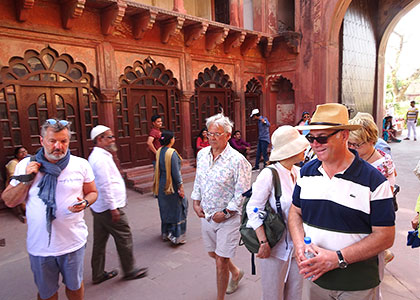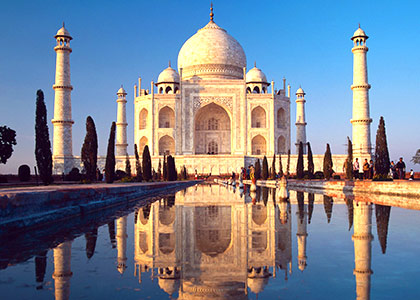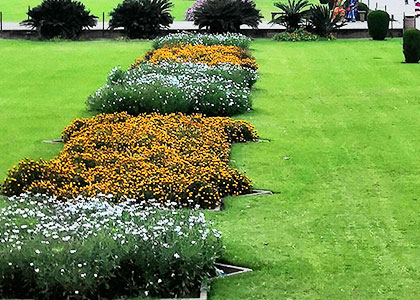What Every Traveler Needs to Know About Agra and Uttar Pradesh
India is a beautiful country. Mountains, oceans, rivers, monuments, canyons, ravines, wildlife sanctuaries, you name it and India has it. One nation where the snow-capped mountains, and humid and super dry weathers co-exist. It truly is a land of unity in diversity and grandeur galore. In a few words, India is a spiritual, multicultural, colossal, unique, utterly beautiful, and very interesting land.
Are you planning to travel to Agra in Uttar-Pradesh? If yes, then you are in for mesmerizing views, delicious food, and a lot of shopping opportunities. Please do not forget to read the top tips below about Agra, to help tourists from foreign lands, to seamlessly acclimatize, feel comfortable, and safe during their stay in India.Welcome on-board!
1. Weather:
The weather is the first difference felt as soon as you land in India. About Agra’s weather, Uttar Pradesh has a wide range of weather, with winters being very cold and summers very hot. Summer heat is often accompanied by heatwaves. March to June is very hot, dry, and sweaty under the scorching Sun. If you plan a visit in summers, please carry light, cotton, loose clothing, SPF 50 or higher sunscreen, glucose powder, hand sanitizer, and a bottle full of water. A power bank to charge the mobiles with necessary converters, and adapters are required as in India 220 volts electricity is used.
If you prefer winters, the time between October and mid-February is cold to pleasant. Medium to heavy winter clothing is recommended depending upon your month of travel. Monsoons are between July and September, better avoid travelling in this season as you would not be able to enjoy anything under heavy rainfalls.
|
|
|
2. Sightseeing:
About Agra sightseeing, it can be seen without a tour operator as a map of the city is a good reference. Hiring a government registered guide for the day or complete tour can be helpful in many ways. There are local guides who approach you on the streets and try to land an easy deal. Do not fall for them for your safety. While going with them can be unsafe, they might ask for unjustified money and may mislead.
Government registered guides are trained and charge money as per the government-approved rate chart. A guide will help you communicate with the city. They are specially trained in the history of mausoleums and other monuments. Along with explaining the monumental history, they will also guide you on which places to visit and which ones can be avoided. Agra has a huge number of tourist spots and inexperience can be misleading. You could hire a guide speaking your native language. English, German, Spanish, Chinese, Japanese, and French are some languages commonly spoken by these guides. The tourism department of the government of India provides a toll-free helpline (1800-11-1363 or 1363) service in more than 10 foreign languages.
3. Identity Proofs and other Documents:
Some of the places like the entry gate of the Taj Mahal require a valid government authority issued identity card with your picture on it. Without this, you may not be allowed to enter the premises. Please keep your proper permits, flight tickets, ID proofs, passports, visas, licenses, ATM –Debit/Credit cards safe to carry around.
You might need your ID card for tickets and passes, and ATM cards often, so keep them handy yet safe, while on a tour. The tourist spots in Agra may be crowded, and pick-pocketing is rampant. If you are visiting on a tourist visa and are scheduled to stay no longer than 30 days, Electronic Travel Authorization (ETA) is helpful. To know more about it and apply, visit the Indian Government’s official website. The application is to be made before arrival in India.
4. Interactions and Safety:
Keep a watch on your belongings. The pickpockets, thugs, touts, and tricksters tend to chase foreign tourists. Many of them want to associate as a tour guide. Hire a government registered guide or book tours through the Ministry of Tourism website or other Government of India recognized travel companies, as a safety measure. It is suggested to interact through your guide or tour operators. The government of India also issues guidelines and tourist guide books are also available to help you gain knowledge on the state before-hand.
• Use your discretion in talking and mingling with people.• Avoid public transportation at odd hours.
• Do not carry too much cash.• Keep a photocopy of your passport to carry with you. Another copy of all important travel documents to keep safe with you is advised.
• Make a note of emergency numbers and keep them handy. Police – 100; Fire- 101; Ambulance -103; All-in-one Emergency number is 112.• Get travel insurance from your country to cover health issues, accident, damaged or lost luggage, travel delays, cancellations, and other possible eventualities.
See more about 9 Travel Hacks to Stay Safe in Agra
5. Clothing:
It is recommended that in India you dress as per the place and customs. Dress modestly in Indian or casual clothes. Some places like temples, mosques, or other holy places may require you to additionally cover your head with a scarf or remove your shoes at the entrance. It is good to abide by these as it is considered a mark of respect to the deity and taken quite seriously. You could take a cue from the locals in case you feel lost.
|
|
|
6. Food:
Like most of the other things food is different too. Indian food is often spicier and can cause stomach upset to the uninitiated. Eat healthy, freshly cooked and closed food usually available at good restaurants with a decent number of people visiting it. Drink bottled and sealed water. Carry your medication for headache, diarrhea, and heat stroke (in case you are traveling in summers), and know if you are allergic to any medicine. Doctors and pharmacies are easily available everywhere, should you need medical attention.
See more about 7 Agra Famous Food
7. Language:
Although people know English, Hindi is vastly understood and spoken. It is the language of interaction. It is helpful to know at least some words of Hindi. Some of the commonly used words are: Namaste (hello/Goodbye), Theek hai (alright/ok), Haan/Hanji (yes), Nahi (no), Madad (help), Khaana (food), Paani (water), Aaj (today), Kal (tomorrow), Chai (tea), Chalo (let’s go), Garam Paani (hot water).
See more about Language in India
8. Transportation:

Agra Horse-driven Carriage
|
Read more about Taxi Services in Agra, How to Travel to Agra by Bus
9. Money Matters:
Travel cards, debit and credit cards, traveler’s cheque and money wallets are commonly used by tourists in India. Money can be exchanged at airports, banks and travel companies. ATMs and international banks are easily available. In case you need money and can’t get it through an ATM, it can be transferred through Western Union.






